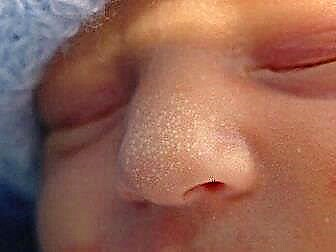Polydex instruction
Polydexa is a combined drug, which means that it is capable of simultaneously exerting several types of effects. This feature favorably distinguishes the drug from a number of other medicines, since Polydexa quickly and effectively copes with various diseases.
In addition, the combination of several medicinal properties in one preparation makes it convenient to use. This moment is especially important in children's practice, because every parent knows how difficult it is to carry out medical manipulations to a baby.
What are the forms of medication release?
Looking at the window of the pharmacy, parents may notice that Polydex is available in several forms - drops and spray. The manufacturer did not make this division by chance, because each dosage form is intended for specific purposes. The spray is recommended for use in diseases of the nasal cavity and paranasal sinuses, and drops are most effective in treating otitis media.
Although the composition of the drug in both forms is similar and includes antimicrobial and anti-inflammatory components, there are still some differences. The drug, intended for administration into the nasal cavity, also includes a vasoconstrictor, which reduces the unpleasant symptoms of the disease.
The drops are available in a 10.5 ml bottle, which is accompanied by a special dropper. The combination nasal spray contains 15 ml of medication and is equipped with a spray tip for convenient use.
Each of the dosage forms is designed to treat a specific disease. You should not ignore the manufacturer's recommendations and use the medicine for other purposes. You can use Polydex nose drops only with the permission of an ENT doctor.

Composition and main types of action of the drug
Polydexa drops
The drug contains 2 antibiotics at once: aminoglycoside neomycin sulfate and cyclic polypeptide polymyxin B sulfate. The combination of these antimicrobial agents significantly expands the scope of the drug and can be used in the detection of various infectious agents.
Otitis media can be caused by both gram-positive and gram-negative microorganisms. There are frequent cases of association of several pathogens, for example, with inflammation of the middle ear, pneumococci, haemophilus influenzae, b-hemolytic and Staphylococcus aureus, Pseudomonas aeruginosa and others are found.
The combination of antibiotics from different groups makes it possible for the drug to fight various infectious agents. Such as Staphylococcus aureus, Klebsiella pneumoniae, Haemophilus influenzae, Escherichia coli, Pseudomonas aeruginosa.
In addition to antibacterial active substances, Polydex drops also contain an anti-inflammatory component, represented by dexamethasone sodium metasulfobenzoate. This substance from the group of hormones glucocorticoids has a pronounced anti-inflammatory effect and quickly relieves swelling of the mucous membrane.
Polydex spray
The composition of the medication, produced in the form of a nasal spray, is identical to ear drops, the medication contains the same active ingredients. But there are still some differences. Designed for the treatment of diseases of the nasal cavity and paranasal sinuses, Polidex spray contains a component that can effectively deal with the most common symptom of the disease - nasal congestion.
Phenylephrine hydrochloride causes local vasoconstriction, reduces the severity of edema of the mucous membrane of the nasal cavity, auditory tube, paranasal sinuses. Thanks to this substance, the amount of discharge from the nose decreases, the main symptoms of the disease are eliminated. This immediately affects the health of the baby, the little patient feels relief.
When is Polydexa prescribed?

In the annotation to the drug, the manufacturer clearly defined for which diseases the antimicrobial agent should be used. So, ear drops are recommended for eczema of the ear canal or inflammation without signs of tearing of the tympanic membrane. And for the treatment of chronic and acute rhinitis, inflammation of the paranasal sinuses, it is worth giving preference to a medication in the form of a spray.
The drug can be part of the therapy for patients of different age groups.
The use of Polydex in pediatric practice
For babies over 2.5 years old, it is possible to use a spray in the nose after consulting a doctor. Also, if there are signs of otitis externa, the manufacturer recommends using ear drops, if necessary.
The introduction of local antibacterial drugs into the nasal cavity should be carried out only if there are clear indications - the presence of a microbial infection. The uncontrolled use of antibiotics leads to the formation of resistant bacterial microflora and increases the risk of recurrent episodes of the disease.
Administration of the drug in adults
Polydex drops and spray can be part of the treatment of bacterial infections of the ENT organs in adult patients. The dosage of the medicine is selected by the doctor individually in each case.
Use of the medication during pregnancy and lactation
Although the drug is local and acts mainly on the mucous membrane, some of the drug is still absorbed into the systemic circulation. Therefore, an antimicrobial drug should be prescribed only in exceptional cases when there are significant risks to a woman's health.
Long-term use of topical antibiotics from the aminoglycoside group by a pregnant woman can lead to damage to the fetal hearing organs.
How to use the drug?
The dosage and frequency of use of the drug is determined by the doctor, taking into account the clinical manifestations of the disease and the age of the patient. Usually the duration of treatment is 5 to 10 days. Longer use of the drug increases the risks of complications and side effects.
For the treatment of diseases of the nasal cavity and paranasal sinuses in children from 2.5 to 15 years old, doctors advise injecting the drug into each nostril three times a day. The frequency of use of the drug in adults increases up to 5 times a day.
Do not use spray medications for young toddlers or nasal rinses. Medication given under pressure can spread the infection and cause otitis media.
Ear drops of Polydex should be used twice a day, selecting the dosage from 1 to 5 drops depending on the patient's age and the severity of the disease. Before introduction into the ear cavity, the preparation should be warmed by holding the bottle in hand for some time.

Undesirable consequences of using the medication
The occurrence of adverse reactions is directly related to the misuse of the drug. Therefore, before deciding to use Polydex, you should consult with your doctor and find out about the features of the combined drug. Sometimes in patients prone to hypersensitivity reactions, allergies and a rash on the body are possible.
It is unacceptable to use drops, which include aminoglycoside antibiotics, if there is a suspicion of a ruptured eardrum. Once in the deep structures of the ear, these drugs can damage the sound-receiving apparatus and lead to the development of hearing loss.
Special instructions
When treating with an antimicrobial drug for topical application, the use of other aminoglycosides should be excluded, since the risk of unwanted effects increases.
A spray in the nose containing phenylephrine should be used with caution in hypertensive patients. In this case, the interaction of Polydex with antihypertensive drugs is possible.
Treatment with this drug should be abandoned for persons with severe renal failure.
Storage conditions and average price
The medicine is stored at room temperature, and the shelf life specified by the manufacturer reaches 3 years.
The price of the medicine varies from 200 to 400 rubles, depending on the region of the country, the pharmacy network and the form of the drug release. Of the analogues, it should be noted such drugs as Isofra, Sofradex, Deksona, Otofa.

Conclusion
Polydexa is a high-quality and effective drug that can be used in both children and adults. But the medicine should be used correctly, following all the advice and prescriptions of the doctor. Only in this case, you can be sure that the treatment will not harm the baby, and the ailment will not make itself felt again.



